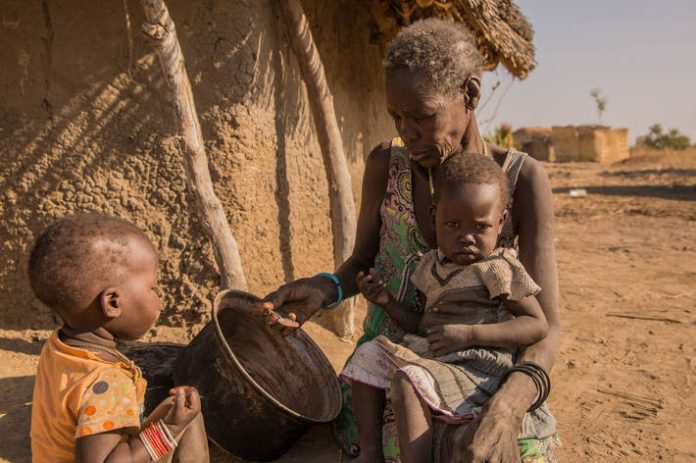A regional food security body has warned of an impending food crisis in the Great Lakes region especially in the Karamoja region in Uganda, Somalia, Kenya and Ethiopia.
The Food Security and Nutrition Working Group (FSNWG) a regional platform mandated to provide up-to-date food security and nutrition situation analysis (early warning) in the GHA, has reported that around 10.7 million people are currently food insecure.
“Northeastern Kenya, south and central Somalia and south and eastern Ethiopia would likely experience a rapid decline in pastoral conditions. Dry conditions and high temperatures, between January and March, have already led to deteriorations in pastures and water availability in these areas, affecting livestock body conditions, reducing milk production, and leading to earlier-than-normal livestock migration. Crop production would also be below average in marginal agricultural areas of Kenya, Somalia and Ethiopia,” FSNWG said in a press release on Wednesday.
FSNWG monitors closely the situation and provide climate updates on a 10-day basis, as well as monthly overall food security updates in the greater horn of Africa.
Last month, the Network of Climate Journalists of the Greater Horn of Africa (NECJOGHA), while quoting national meteorological services of Uganda, Kenya and Tanzania blamed the current dry spell in the region on the cyclone season in south eastern Africa especially around Mozambique and Madagascar which has played a key role in delaying the northward movement of the rain-bearing Inter-Tropical Convergence Zone (ITCZ). NECJOGHA brings together journalists and climate scientists in the GHA for better dissemination of climate information.
On April 2 , a report released jointly by the European Union, the Food and Agriculture Organization of the United Nations (FAO), and the UN World Food Programme (WFP) in Brussels said that around 113 million people in 53 countries experienced acute food insecurity in 2018, compared to 124 million in 2017. Of these three are in the GHA.
“Nearly two-thirds of those facing acute hunger are in just 8 countries: Afghanistan, the Democratic Republic of the Congo, Ethiopia, Nigeria, South Sudan, Sudan, Syria and Yemen. In 17 countries, acute hunger either remained the same or increased. Climate and natural disasters pushed another 29 million people into acute food insecurity in 2018,” the joint report says.
According to the recent report released by FSNWG, the delay in the start of the March to June long rains, coupled with forecasted rainfall deficits in April are building on already dry conditions due to poor October to December rains over some parts of the Greater Horn of Africa. The poor performance of the past season’s short rains already led to below-average crop production and deteriorating pastures in some agro-pastoral and marginal mixed farming areas.
“If the forecasted rainfall deficits materialize in April, this would lead to an atypical increase in food insecurity, likely to peak from June to October,” warns FSNWG.
This, along with the potential of lower than average production of key regional players such as Uganda and Tanzania, could cause price increases and reduce access of poor households to basic food supplies.
“Although a temporary relief is expected in pastoral areas during the second half of the rainy season (end of April – May), should rainfall deficits occur, the severity and size of the food insecure population might quickly rise afterwards. It is also likely to cause further increase in acute malnutrition of children under the age of five, which is already at concerning level,” the report warns.
ADVISORIES
FSNWG urged immediate and coordinated planning by governments, donors and all concerned stakeholders to respond to the potentially deteriorating food security and nutrition situation. The following actions should be urgently undertaken.
- Activation of early actions focusing on strengthening rural agricultural livelihoods (e.g. animal feed, water, vaccinations, market support) in worst-affected areas to mitigate the likely food security impacts of an upcoming prolonged and severe lean season;
- Release of drought-related contingency funding to enable timely early actions and response;
- Preposition required goods for emergency response (e.g. food, nutrition support, water, medical supplies etc.) in advance of the expected peak in needs between June and October;
- Plan for recovery support to cropping households in advance of next cropping season (e.g. short/Deyr rains).
- Map current and planned interventions to ensure a more coordinated response and strengthen the existing food security information systems and coordination
- Strengthen programs that ensure peaceful livestock migration and reduce tensions between transhumant pastoralists and host communities in advance of likely atypical livestock movements
Credit: The Network of Climate Journalists of the Greater Horn of Africa (NECJOGHA)





















